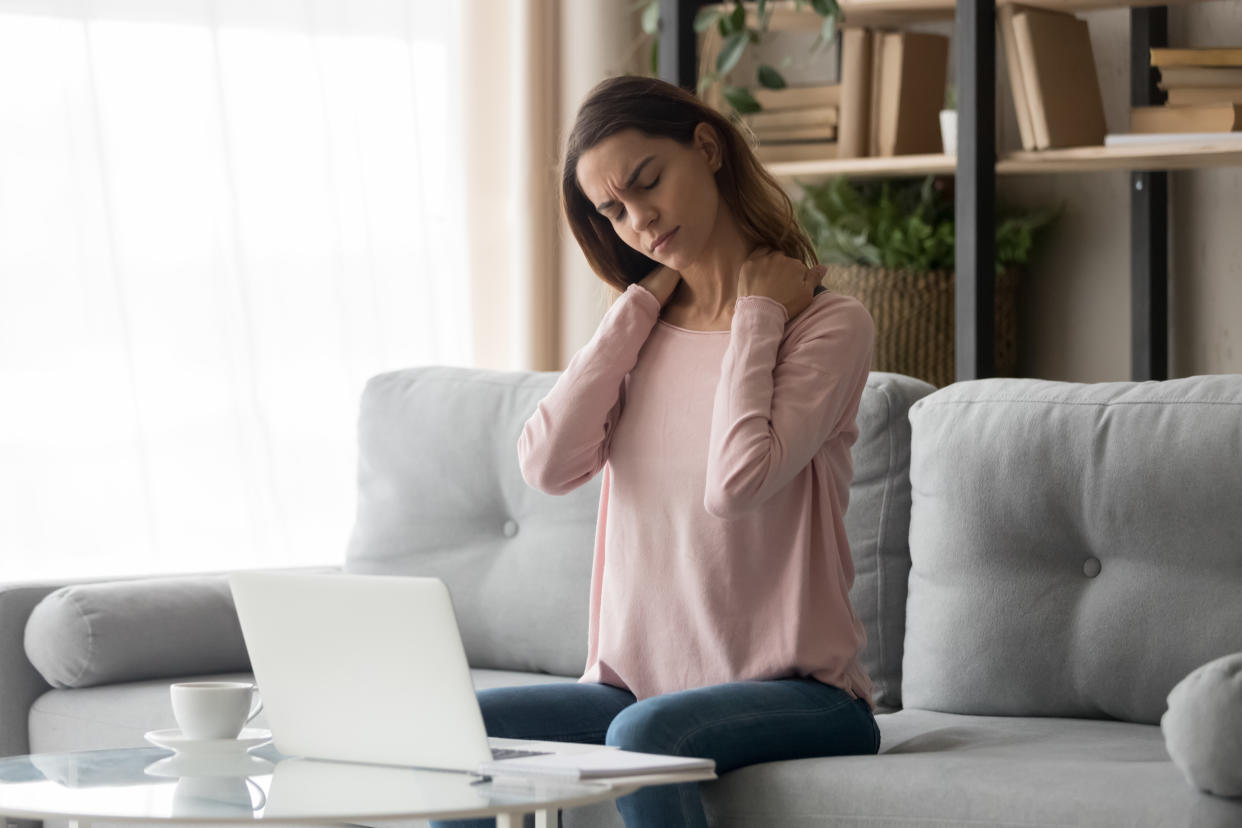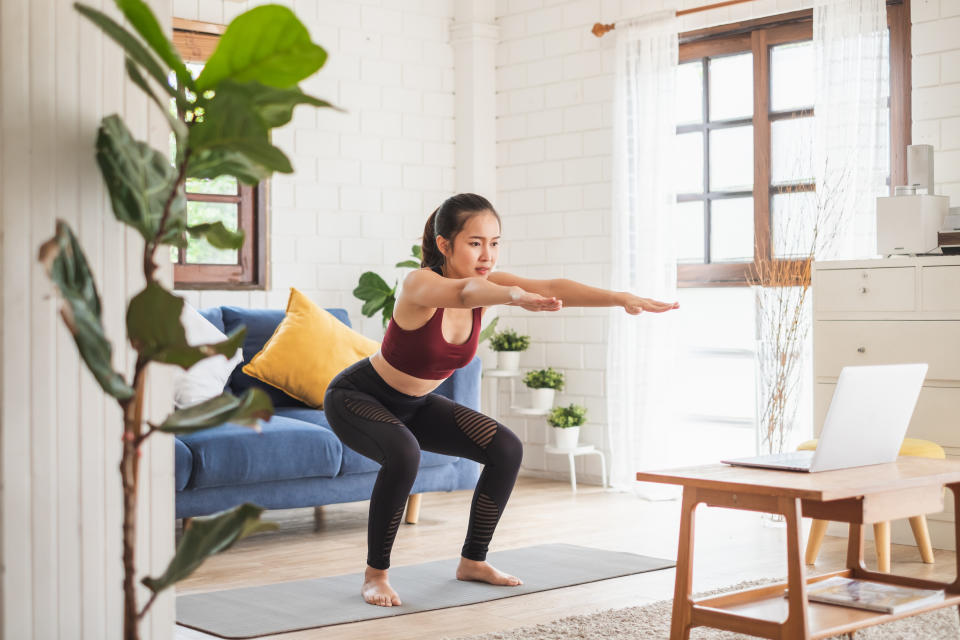Coronavirus: How to avoid ‘tech neck’ while working from home

The coronavirus outbreak has impacted nearly every aspect of our lives, however, many may not have expected the pandemic would trigger an aching neck.
Since lockdown was imposed on 23 March, front-line workers have arguably never been so stretched, while office staff are approaching their eleventh week of typing away in the kitchen.
With schools and shops gradually reopening, it may feel like we are approaching a “new normal”, but the return to the office may still be some way off.
While some have office chairs and desks at home, many are battling “tech neck” as they make do with unsupportive set ups.
Read more: Seven exercises to prevent and correct tech neck
“Lockdown happened so quickly that a lot of people were simply not properly equipped to work from home for a prolonged period,” said Marc Holl, professional head of physiotherapy at Nuffield Health.
“Under normal circumstances people may work from home like this every once in a while, but over a prolonged period like lockdown, the odd muscular niggle in backs, necks and shoulders can start to turn into a daily dull ache.
“Not only can this physical pain cause discomfort, but it can also begin to impact people’s mental health, especially as they continue to face uncertainty about when they can return to normal working conditions”.
Nuffield Health surveyed 1,000 adults who are working from home or have done at some point during lockdown.
While an at-home office or study is the most popular place for working, more than one in four (26%) are making do with a dining table.
Just under a quarter (24%) have their computer on their lap or coffee table, while 6% are sitting on the lounge floor and 4% are working off a kitchen counter.
“With laptops on laps, as we hunch over to read and type, we’re placing greater strain on our neck and shoulders”, said Holl.
Perhaps surprisingly, more than one in 10 (11%) are working from their bed.
Read more: People get fillers to combat tech neck
“The challenge with working from soft surfaces such as sofas and beds is that they don't provide good lumbar (lower back) support”, said Holl.
People are trying to make their newfound “office” more comfortable, with three in 10 (30%) sitting on a cushion and more than one in five (21%) using books or board games to raise their laptop.
Despite their best efforts, seven in 10 (70%) of those surveyed are experiencing new aches and pains as a result of working from home.
More than two in five (42%) think their posture has become worse, three in 10 (30%) have niggling back pain and one in five (20%) have developed aches in their neck.
Other complaints include eye strain (20%), shoulder discomfort (15%), joint stiffness (15%) and headaches (11%).
All this means 13% are taking painkillers more often than normal.

How to combat ‘tech neck’ will working from home
While building an office may be unrealistic, simple exercises can improve posture, warding off aches and pains.
To prevent discomfort, start the day by stretching.
Holl recommends lying flat on your back, hugging both knees to your chest. Flex your head towards your knees, so you are curled into a ball, holding the pose for 10 seconds.
Standing side bends can also be effective. Slowly slide your hands down each side of your leg, going as far as you can until it becomes uncomfortable. Hold for 10 seconds and slowly come upright.
Posture is also important for good back health.
Read more: The WFH positions messing up your back and neck
Holl recommends sitting with your bottom as far back on the chair as you can, with the monitor at eye level. Stack books to raise the height of your laptop if needed.
If you have to work from the sofa, ensure your knees are at a 90-degree vertical bend. A cushion under your feet may help.
To support the lower back, roll up a towel or place a small cushion behind you.
Ensure your blood keeps circulating by stepping away from your work station around every half an hour.
You could do some lunges, squats or shoulder rolls during this moment of respite, said Holl.
While not related to your neck, he also recommends sitting near a window with plenty of natural light to boost your mood and ease eye strain.
Staying hydrated will also help combat headaches, added Holl.

 Yahoo News
Yahoo News 

